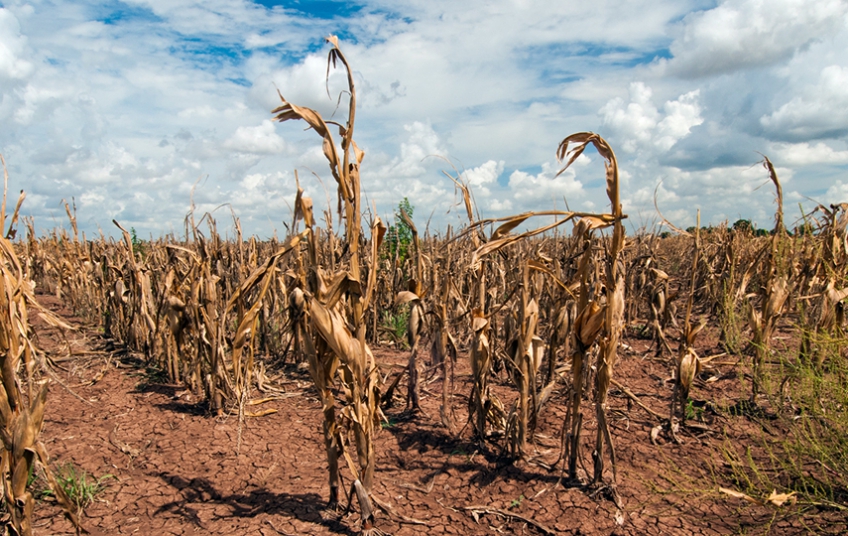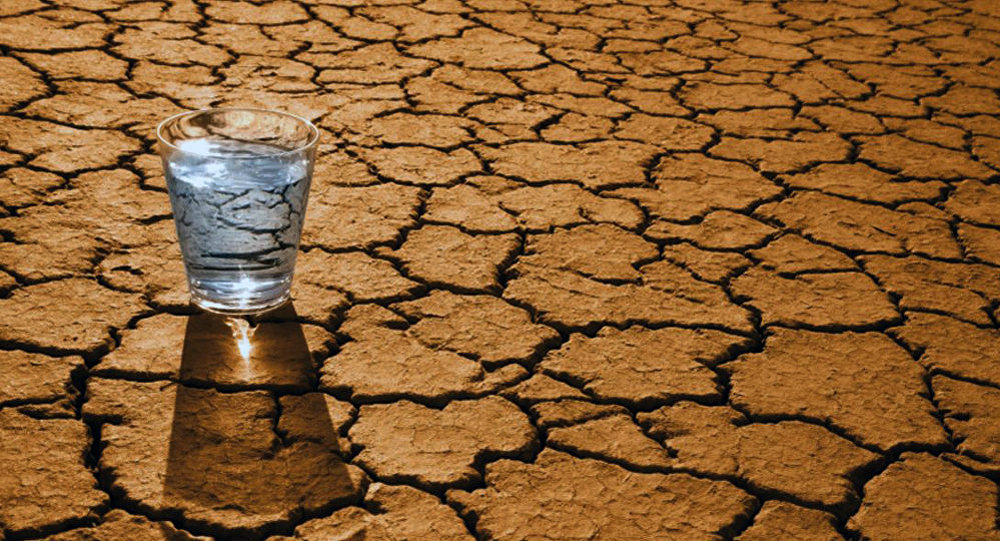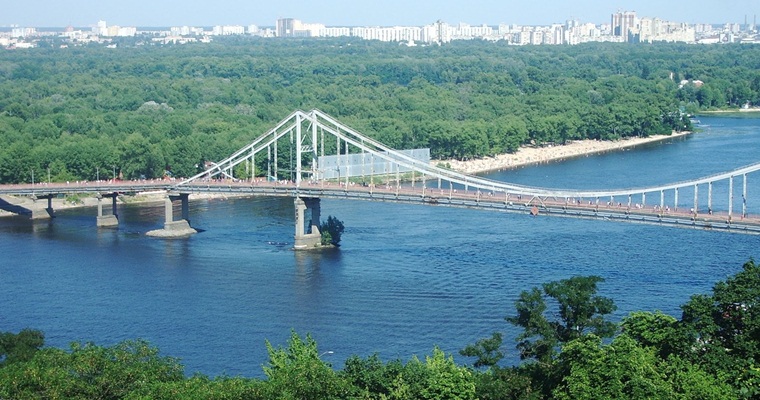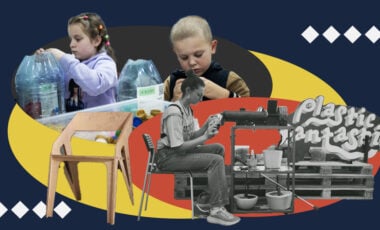Terrible droughts and imports of drinking water? What to do so as not to turn Ukraine into a desert

10 years ago, rafting was regularly organized on the Pivdennyi Buh river in the Mykolaiv region. Fans of active recreation happily went downstream on the Buh's raging waters in large noisy groups. But those who want to go rafting there now are less lucky: instead of extreme rafting, tourists can only swim in a circle in a small pond. Rafting on the river won't work: it has become too narrow and shallow.
Almost 10,000 rivers have disappeared in Ukraine over the past 30 years, as Mykhailo Apostol, an adviser to the Interior Minister, said on his Facebook page a year ago. According to disappointing forecasts, in 20-30 years, Ukraine will have to import drinking water. This year, the forecasts are confirmed. According to the UK's National Meteorological Service, there will be a decrease in the water flow of Ukrainian rivers, except for the Carpathians, by 25-50%, in the countries of Central and Eastern Europe, including Ukraine, during the XXI century.
This state of affairs is a serious problem. Research by the World Resources Institute (WRI) shows that Ukraine ranks second in the anti-rating of countries at risk of drought. Of the 138 countries listed in the ranking, except for the African ones, for which no data are available, water is worse than in Ukraine only in Bangladesh, India, and Serbia.
Reducing the number of water resources can have irreversible consequences, from epidemics to accidents at nuclear power plants. This is an extremely important and very serious issue, a global problem facing Ukraine.
Why is there not enough water in Ukraine?
"There's a stereotype, and I even see it with my parents. They think Ukraine has a lot of water resources," says Daria Lazarieva, an expert in climate and transport department at the "Ecodiia" public organization, "but Ukraine isn't sufficiently supplied with water."
According to research by The World Bank Group, among 20 European countries, Ukraine ranks 17th in terms of water supply; these are disappointing results. All this is mainly because we take water from surface runoff in Ukraine: 97% of the water we use for various purposes is taken from rivers and less often from lakes. Only 3% of the water used is groundwater:
"That's why there's such a big difference between water supply in Ukraine and the world because, in other countries, people care more about land and water. In addition, there's another resource for water 'storage'; it's snow and ice caps in the mountains. For example, in Canada, there are large lakes, and most of the water is stored there. India is also behind us; there are more water resources there because a lot of water is stored in ice caps on the mountains, and much less freshwater is stored in the snows of the Ukrainian Carpathians," Daria explained.
Climate change and unsustainable agriculture are also among the causes of the drought. Worn-out and inefficient irrigation systems result in us losing about a third of the water used to irrigate fields and plants. We take water from rivers to water potatoes, sunflowers, and corn, but some of the water is lost on the way to the plantation. In addition, due to climate change, the nature of precipitation is changing and within a few hours their monthly norm may fall, as it was recently in Western Ukraine, and somewhere, on the contrary, there's a drought, so the water evaporates faster due to irrigation inefficiency. A more sustainable method of watering is at night when the temperature and the impact of solar energy are lower, and therefore, the plants have time to collect enough water. If you water during the day, the water evaporates quickly.
"Last year there was a drought, the flow of rivers decreased. Ecodiia has published a study on the impact of climate change on their water content. The worst results are for Pripyat, where, according to one scenario, the runoff will be reduced by 30%; it will be very noticeable in the summer," Daria warns.
What are the risks associated with water resources reduction in Ukraine?
First, poor water quality is always a high risk of developing dysentery. Contaminated water and unsanitary conditions are major factors in child mortality in developing countries. Poor water supply and infectious agents in the water, as well as the lack of basic hygiene and sanitation, lead to diarrhea in children. It is estimated that up to 1.5 million children under the age of 5 die each year from the disease in the poorest regions. Such consequences may come to Ukraine. According to Lazarieva, 10% of the runoff of Ukrainian rivers is waste from sewers:
"Yes, water goes through several levels of filtration. It's settled, but the filtration system in Ukraine is imperfect. Because of this, the water starts to bloom, the reservoirs stagnate," she explains.
But dysentery, according to the expert, isn't the worst scenario. The concentration of nitrates and phosphates in water increases. Nitrates are characterized by a fairly wide range of toxic effects. The most serious consequence of nitrate consumption is methemoglobin development (methemoglobinemia), which disrupts the transport of oxygen to human tissues. Depending on the dose of nitrates, poisoning can vary in severity. The first symptoms appear in 1-2 hours, with dizziness, headache, disturbance of spatial orientation. Mucous membranes, the skin on the fingers and ears becomes bluish. Then there is vomiting, shortness of breath, dizziness, the skin becomes grayish; pronounced phenomena of oxygen deficiency. In severe poisoning, without medical attention, death can occur within a few hours after the harmful substance enters the body.
However, much of the water is used by industry. According to Ecodiia research, it accounts for 65% of all used water resources in Ukraine. According to expert Daria Lazarieva, when industrial enterprises process water and discharge it into the river, it's not only poorly filtered, it returns overheated. Such heating also reduces the amount of biome in water bodies, because organisms aren't adapted to other living conditions. All living things that are accustomed to certain temperature regimes begin to suffer, and some species disappear altogether. This problem is especially acute in the south of Ukraine; due to the drying up of rivers, the Tuzly limans, where fish spawn, feeding dozens of species of wild birds that nest there, are becoming shallow. Employees of the Tuzly Lagoons National Nature Park have to constantly renew the water exchange of limans with the sea, clearing the sand separating the limans from the sea, to fill reservoirs with water and prevent the disappearance of the entire ecosystem, which includes insects, fish, birds, and other wildlife.
In addition, overheating water can cause a real man-made disaster, as fresh cold water is used by power plants to cool reactors. The warmer the water is, the stronger the emergency will be.
As Daria Lazarieva explained, another problem is unsustainable agriculture: the land is plowed on the slopes, excessive fertilizers are applied, enterprises don't sufficiently clean the effluents from their farms, the concentration of phosphates, nitrates, nitrites, which poison water in rivers and groundwater, increases in water bodies. Exceeding the concentration of these substances was recorded in wells in settlements located near large agricultural enterprises.
"The less water there is in the rivers, the higher the concentration of such harmful substances in the water is because they don't disappear anywhere, so their proportional share increases. Of course, they're carried away to the sea, but the sources of this pollution don't disappear, and from year to year nitrates and phosphates get to the water in the same amount, and sometimes in even bigger amounts," the expert explains.
According to various scenarios, the water runoff of rivers, which, as we remember, is the main source of water resources in Ukraine, may decrease from 9% to 37%. Such changes will hit the economy: the agricultural sector, utilities, recreation, and tourism will feel it most. The study shows that hydropower may cease to function at all, metallurgy, where almost all stages of the production cycle require a significant amount of water, will suffer significant losses, the functioning of water transport will be impossible, as well as the existence of fisheries.
Can such consequences be prevented?
Rivers drying up is a global problem consisting of many factors. It's a poor quality of cooling and treatment of wastewater at enterprises, insufficient wastewater treatment, and violation of environmental legislation by the agricultural industry.
"I can offer a few simple solutions, but the impact of an individual on the situation is negligible: 16% of the water a person uses for their own needs goes to drinking water, showers and toilet. So, of course, you need to save water, install economical equipment, use phosphate-free detergents. But colossal problems need comprehensive solutions," Daria explains.
Enterprises should also make a significant contribution by reformatting their technologies and approaches. In some cases, it doesn't even require large investments and purchasing new equipment. For example, the amount of water evaporating in the fields can be reduced if you don't remove the tops after the harvest, but leave them on the ground. It helps to retain moisture in the soil.
Wetlands also play an important role in maintaining the water balance of ecosystems; they almost always reduce the frequency of floods, their intensity, or delay them, save groundwater, and can even reduce the temperature to 20°C, which will affect the rate of water evaporation. So the drainage of swamps now literally means the destruction of life on our lands, and the results will be felt not by future generations in the distant future, but by us, contemporaries of entrepreneurs draining swamps.
However, the right to a safe environment for every citizen of Ukraine is enshrined in the Constitution. You can find out about the environmental situation in a certain area through the government hotline, online through an electronic application (the site provides for filling out a convenient electronic form and has all the necessary instructions), or by calling the hotline 1545.
If you have information about existing violations of environmental legislation, you can file a complaint to the Environmental Inspectorate. It's very easy to do via Telegram, Messenger Facebook, or the SaveEcoBot website. The bot helps to make a complaint about contaminated water:
- First, you need to choose one of the suggested options: "I see the source of emissions" or "I see only contaminated water."
- Send the location in one of the suggested ways and confirm it
- Attach photos or comments to the complaint
- Fill in personal data: name, mailing address, e-mail address, phone number, and photo signature
Once the complaint is formed, it should be downloaded and sent to the e-mail address of the local regional council provided by the bot. According to Art. 20 of the Law "On Citizens' Appeals," you must receive the response within 15 days from the date of them receiving the complaint, and if the answer requires additional research, it'll be within a month.
According to the standard procedure, an environmental inspector should go to the place of pollution, initiate the necessary inspections and additional control of enterprises that violate environmental legislation.


























































